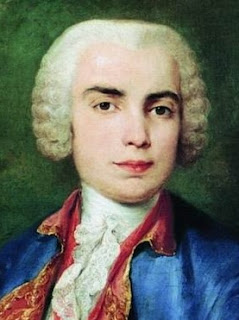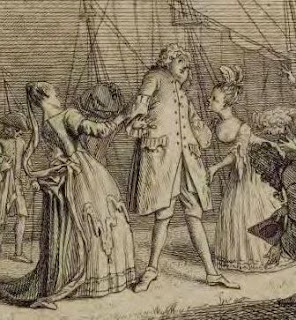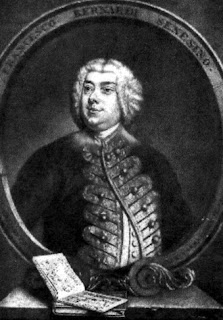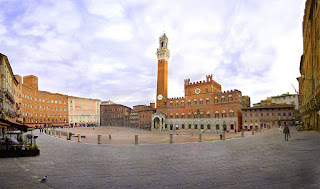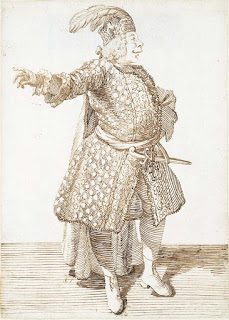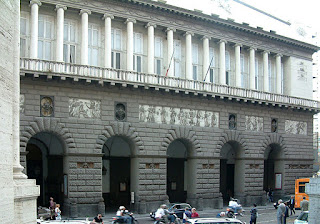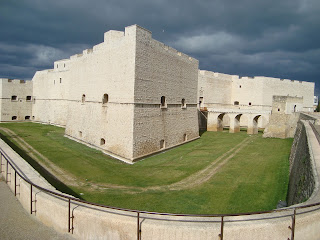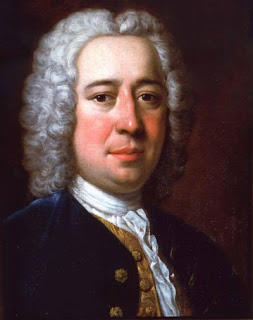Neapolitan famous for his 555 keyboard sonatas
 |
| A portrait of Domenico Scarlatti, painted by Domenico Antonio Velasco in 1738 |
Born in the same year as Johann Sebastian Bach and George Frideric Handel, Scarlatti was the sixth of 10 children fathered by the composer Alessandro Scarlatti.
Like his father, Domenico composed in a variety of musical styles, making the transition in his lifetime from Baroque to traditional Classical. Today, he is known mainly for his 555 keyboard sonatas, which expanded the musical possibilities of the harpsichord.
Although he began his career in Naples, Scarlatti spent a large part of his life in the service of the Portuguese and Spanish royal families. In fact, he died in Madrid in 1757.
Early in 1701, at the age of just 15, Scarlatti was appointed as composer and organist at the royal chapel in Naples. At 17, his first operas, L’Ottavia restituita al trono and Il Giustino, were produced there.
In 1705 his father sent him to Venice, reputedly to study with the composer Francesco Gasparini, although nothing is known with certainty about his life there. It is thought he may have met a young Irishman, Thomas Roseingrave, who later described Scarlatti’s advances in harpsichord music to the English musicologist Charles Burney, although other accounts of his life suggest he may have first encountered Roseingrave in Rome.
 |
| Alessandro Scarlatti passed on his musical versatility to his son, Domenico |
While in Rome, Scarlatti was maestro di cappella at St. Peter's from 1715 to 1719. Also in Rome, he produced his last opera, Ambleto and collaborated with Nicola Porpora in Berenice, regina di Egitto.
His Rome adventure also brought a commission from the Portuguese embassy, for which in 1714 he composed a cantata in honour of the birth of a crown prince of Portugal. A few years later, he quit his position at the Vatican to move to Lisbon, where his serenata La Contesa delle Stagioni was performed at the royal palace.
Scarlatti became musical director to King John V of Portugal, as well as music master to the king’s younger brother Don Antonio and to Princess Maria Bárbara de Bragança, who was to remain his patroness and for whom most of the harpsichord sonatas were written.
In 1728, after his father had died, Scarlatti returned to Italy, where he married a Roman girl, Maria Caterina Gentili, who was much younger than him and who bore him six children. In the same year, after his pupil, Maria Bárbara, married the Spanish crown prince, the future Ferdinand VI, he followed the newlywed royal couple to Spain.
 |
| The castrato singer Farinelli, like Scarlatti, enjoyed the patronage of the court of Madrid |
Among his compositions for the Spanish court were most of his 555 keyboard sonatas. While in their service, he befriended the Neapolitan castrato singer Farinelli, who also enjoyed royal patronage in Madrid.
Scarlatti died in Madrid at the age of 71. His residence on Calle Leganitos is designated with a historical plaque. His descendants still live in the Spanish capital.
His music, the sonatas in particular, had a profound influence on the compositions of contemporary and subsequent composers. Among his admirers, apart from Handel and Bach, were Bartók, Mozart, Beethoven, Liszt, Brahms, Chopin and Debussy.
 |
| The Conservatorio di Musica San Pietro a Majella became the centre of the 18th century music scene in Naples |
The famous Conservatorio di Musica San Pietro a Majella, which became the centre of the city’s musical world in the years after Scarlatti, evolved from four institutions set up in the 16th century with the prime purpose of providing a refuge for orphan children. The name ‘conservatorio’ relates to this original purpose, which was to conserve the lives of the children. The oldest was the orphanage of Santa Maria di Loreto, situated in the poor fisherman’s district of the city. These institutions aimed to provide tuition in various skills, including music. In time they acquired such a good reputation for providing a musical education that they began to be seen as music colleges primarily, and Naples eventually became one of the most important centres for musical training in Europe, nicknamed the “conservatory of Europe". Under the rule of Joachim Murat, the French cavalry leader Napoleon installed as King of Naples for a short period in the early 19th century, the original four conservatories were consolidated into a single institution, which was relocated in 1826 to the premises of the ex-monastery, San Pietro a Maiella.
| The Palazzo della Cancelleria in Rome was the home of Cardinal Pietro Ottoboni, a patron of music in the city |
The Palazzo della Cancelleria, the palace of Cardinal Ottoboni where Domenico Scarlatti’s musical trial against Handel is thought to have taken place, is situated between Corso Vittorio Emanuele II and the Campo de' Fiori. It is probably the earliest Renaissance palace to be built in Rome. It is the work of the architect Donato Bramante between 1489 and 1513, initially as a residence for Cardinal Raffaele Riario, who was the Camerlengo - treasurer - of the Holy Roman Church under Pope Sixtus V. It evolved as the seat of the Chancellery of the Papal States. The Roman Republic used it as their parliament building.
Home

